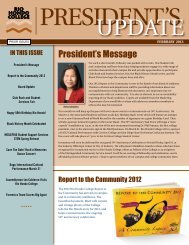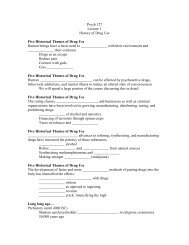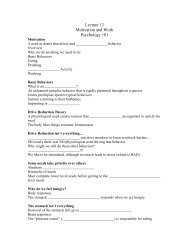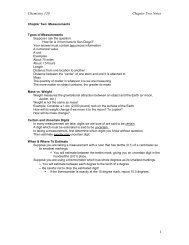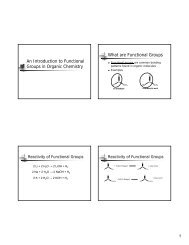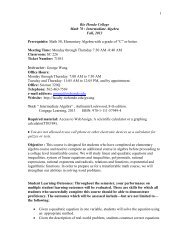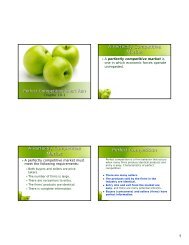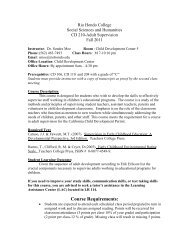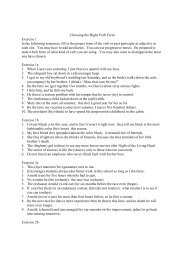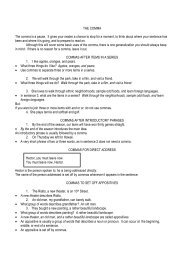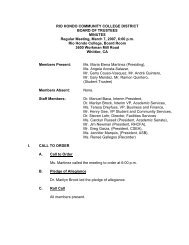Green Building and LEED Core Concepts Guide First Edition
Green Building and LEED Core Concepts Guide First Edition
Green Building and LEED Core Concepts Guide First Edition
Create successful ePaper yourself
Turn your PDF publications into a flip-book with our unique Google optimized e-Paper software.
Integrative design processes can bring these elements together to identify synergistic strategies.<br />
The analysis of whole-building life-cycle costs is central to green building practice because it provides<br />
a framework for underst<strong>and</strong>ing trade-offs between the first costs <strong>and</strong> the long-term operating<br />
costs of HVAC <strong>and</strong> other energy-using systems. <strong>LEED</strong> encourages project teams to use simulation<br />
models to quantitatively analyze the trade-offs <strong>and</strong> identify cost-effective energy-saving strategies.<br />
This saves money over the life of the building, saves energy, <strong>and</strong> reduces greenhouse gas emissions<br />
<strong>and</strong> other environmental impacts.<br />
Assessments <strong>and</strong> Measurements<br />
• Energy or greenhouse gas emissions per capita. A community's total greenhouse gas<br />
emissions divided· by the total number of residents.<br />
• Energy use intensity. Energy consumption div ided by the number of square feet in a building,<br />
often expressed as British thermal units (Btus) per square foot or as kilowatt-hours of<br />
electricity per square foot per year (kWh/sf/yr) .<br />
• lighting power density. The installed lighting power per unit area.<br />
• Measures of energy use. Typical primary measures of energy consumption associated with<br />
buildings include kilowatt-hours of electricity, therms of natural gas, <strong>and</strong> gallons of liquid<br />
fuel.<br />
• Performance relative to benchmark. A comparison of a building system's performance with a<br />
st<strong>and</strong>ard, such as EN ERGY STAR Portfolio Manager.<br />
• Performance relative to code. A comparison of a building system's performance with a<br />
baseline that is equiva lent to minimal compliance with an applicable energy code, such as<br />
ASH RAE St<strong>and</strong>ard 90 or California's Title 24.<br />
ENERGY DEMAND<br />
Saving energy begins with redu ci ng energy dem<strong>and</strong> . <strong>Green</strong> buildings <strong>and</strong> neighborhoods<br />
can reduce dem<strong>and</strong> fo r energy by capturing natural, incidental encrgy, such as sunlight,<br />
wind, <strong>and</strong> geothermal potential, <strong>and</strong> byusing integrated design processes to reduce loads. Examples<br />
include the follOwing:<br />
• Roads, infrastructure, <strong>and</strong> parce ls can be configured so that buildings minimize solar gain in<br />
summer <strong>and</strong> maximize it in winter.<br />
• Adjacent buildings can be designed to shade <strong>and</strong> insulate each other.<br />
• Bui lding designs can incorporate passive strategies, such as mass <strong>and</strong> daylight, to red uce the<br />
dem<strong>and</strong> for artific ial lighting, heati ng, <strong>and</strong> cooling.<br />
• Project teams can incorporate techno logies <strong>and</strong> processes that encourage occupants to<br />
underst<strong>and</strong> <strong>and</strong> reduce their individ ual <strong>and</strong> aggregate energy dem<strong>and</strong>.<br />
Taken together, dem<strong>and</strong> reduction strategies provide the foundation for energy efficiency <strong>and</strong> the<br />
effective use of renewable energy.<br />
44<br />
<strong>Green</strong> <strong>Building</strong> <strong>and</strong> <strong>LEED</strong> <strong>Core</strong> <strong>Concepts</strong> <strong>Guide</strong>



